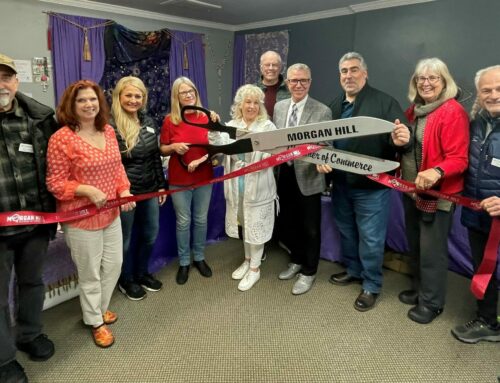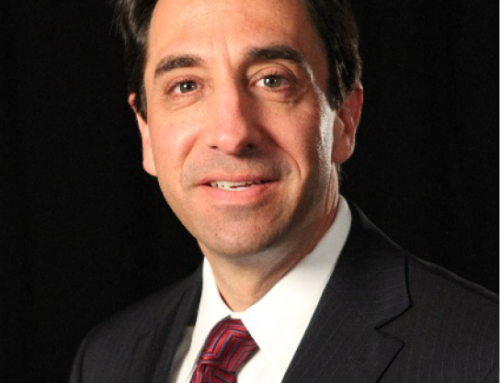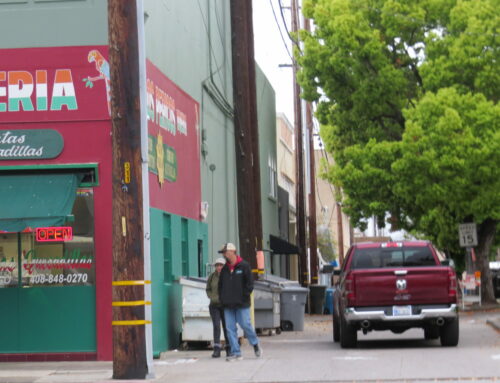Opponents say SEQ plan is flawed, won’t work and is a ‘step backward’
Published in the February 17 – March 1, 2016 issue of Morgan Hill Life
By Marty Cheek

Photo by Marty Cheek
A worker plows under mustard plants in a field in the city’s Southeast Quadrant, the subject of a controversial annexation project.
As wild mustard plants nourished by recent rains now form carpets of yellow flowers in Morgan Hill’s Southeast Quadrant, the fate of this pastoral setting might be determined at the March 11 Local Agency Formation Commission of Santa Clara County meeting. That’s the date when commissioners decide on the city of Morgan Hill’s application to annex 229-acres of land.
For more than a decade, the city has looked at farmland in the area around Hill Road and Tennant Avenue and considered how to keep it as rural as possible against the threat of potential development of housing divisions. Its application to LAFCO proposes forming a sports recreation leisure district on the southwestern edge of the SEQ to create a “buffer” zone. Additionally, the city has adopted an Agricultural Lands Mitigation Ordinance that requires all new development of identified farmlands to be offset with a permanent conservation easement on equivalent SEQ farmland at a one-to-one ratio. City staff are also exploring the idea of using a Transfer of Development Rights program for the SEQ which, if implemented, will place more than half of the SEQ farmland under permanent preservation easements.
Despite the city’s stated intentions to preserve the rural ambiance of the SEQ, some individuals and groups, including the Committee for Green Foothills, question the viability of the city of Morgan Hill’s application that will be considered by LAFCO.

Julie Hutcheson, legislative advocate at the Palo Alto-based Committee for Green Foothills and a Morgan Hill resident, hopes LAFCO members will reject the city’s plan at the March meeting because she does not consider it comprehensive enough to adequately protect the SEQ against development in the future.
“I’ve looked at everything when it comes to the SEQ and, simply put, it’s a step backward,” she said. “There’s nothing progressive about this plan. There’s nothing looking forward. There’s nothing that says Morgan Hill is really taking a step forward and doing a great job with this plan. What it is is we have development that will be completely incompatible with the farming around it.”
LAFCO is a state-mandated agency created in the 1960s to avoid premature conversion of farm land and sprawl, and provide for an efficient deliverance of utility services. The decision whether or not to annex the SEQ into the city boundaries next month will be a crucial one in determining the growth patterns of the city as well as quality of life for future generations.
If LAFCO turns down the application, the city would see this as a “significant setback” in developing sports and recreational facilities and preserving agriculture, Rymer said.

“What we have asked from the city is to take the plan that you have and set it aside,” Hutcheson said. “Stop being so damn married to it and put it aside for a minute. Come to the table with your partners and really start talking about what can work and then come out to the community and really start talking to the community. Let’s start to really talk about what we want to do in that area.”
Rymer said that during the past 10 years there have been at least 40 meetings open to the public about SEQ including city council, planning commission, focus group and community meetings. The city is presenting LAFCO with a viable plan for ag preservation in the SEQ and now is the time to move forward with it, he insisted.
The SEQ borders the area where the Outdoor Sports Center and the Dennis Kennedy Aquatics Center are located. Those city-owned facilities make this area of county land a natural place to develop youth sports, recreation and leisure, Rymer said. This is an essential part of the city’s Economic and Community Development Strategies, he said. It also fits in with the new emphasis by the city for agri-tourism.

“What we want to figure out is what is the most appropriate and responsible development, if any, in our last (U.S. 101) interchange,” Rymer said. “The city has invested a significant amount of money in infrastructure, expanding Tennant and making sure it’s all set up. We’ve invested money into existing recreation infrastructure. So as the conversation has gone on for a number of years, (the question is) what is the most appropriate use?”
Adding to the complexity of that question is the proposed St. John XXIII College Preparatory High School. Organizers of that project are at the onset of raising $30 million to build a 38-acre campus at the corner of Tennant and Murphy avenues. They will closely watch the LAFCO decision because it will impact fundraising and the future of the project. The land is owned by the Diocese of San Jose.
But with more than 450 students, the high school will have a significant impact on traffic in the SEQ along with the additional sports events congestion, maybe even pushing local farmers to decide raising crops is not worth the effort with the added hazard of many more vehicles on the various roads, Hutcheson said.

Another concern the Committee for Green Foothills brings up is how the city will adequately fund the agricultural preservation program. Hutcheson said that the ag mitigation fees are “nowhere near going to make the mark for the city to buy easements.”
Every acre of land would have a $15,000 fee charged to developers, but this falls far short of the conservation easement costs which are $50,000 an acre. Rymer said that the difference will be made up from funds collected for open space or agricultural preservation from residential projects competing in the city’s Residential Control System (RDCS). More than $5 million is now available in this fund and the city projects ongoing administration of the RDCS will generate up to $1 million a year in additional funding.
“We have about $6 million in the bank right now in developer fees for open space and the city council has pledged the money to make up that difference,” Rymer said. “Not only are we having developers here pay, but other developers have paid into that to help preserve ag.”
Hutcheson questions the city’s proposed use of this funding from the RDCS. Instead, there’s another source of money, she said. Santa Clara County is eligible to get a chunk of $40 million in cap and trade money in concert with the California Strategic Growth Council. The county is considering a framework of Morgan Hill, San Martin, Gilroy and South San Jose ag land that will allow for preservation through this funding mechanism designed to prevent the loss of agricultural land in the state, she said.
“They have been granted the Sustainable Ag Lands Conservation grant,” Hutcheson said. “In a nutshell, because it is cap and trade money, we’re looking at how does farmland help to mitigate for greenhouse gas emissions. Our county has been given one of five ($100,000) grants to do that work. This is the forward thinking innovative work that the state is doing.”
Morgan Hill is one of 20 cities and counties in California that have agricultural mitigation policies — out of 500 in the state, Rymer said, demonstrating an indication the city council has made strong moves in farmland preservation. Despite concerns expressed by the Committee for Green Foothills, the city’s environmental impact report for the SEQ, which is required by law, is “very thorough” and addresses many of the issues, he added.
Timing is another crucial element in the SEQ issue. If the city does not move forward to finalize its SEQ land-use plan, farmers and other property owners will face increasing pressure to convert to residential estate properties, Rymer said. Based on historic records of lots, the city faces the potential of more than 100 new homes developed on residential parcels averaging about seven acres in size, he said. Recently, five new 5,000-square-foot homes at the end of Trail Avenue were built, an example of the threat to agriculture within the SEQ if action is not soon taken, he said.
DETAILS
What: Local Agency Formation Commission
When: 10 a.m., March 11
Where: County board meeting chambers, 70. W. Hedding St., San Jose
CORRECTION NOTICE: The print version of this story incorrectly stated the number of acres the city hopes to annex. It’s 229 acres and not 1,195 acres (which is the total amount of land in the Southeast Quadrant).






